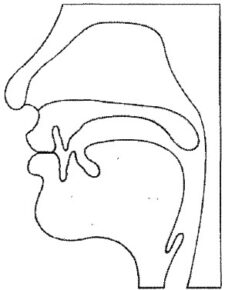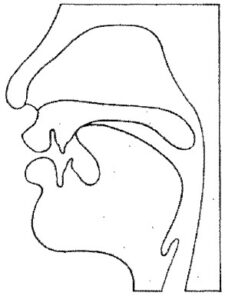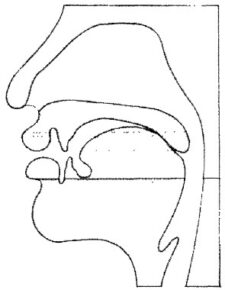Nasals
Nasal sounds occur when a complete closure is made somewhere in the
mouth, the soft palate is lowered, and air escapes through the nasal cavity.
Voiced sounds like / m / are shown on a white background.
Characteristics
A bilabial sound. Total closure is made by both lips. If followed by / f / or / v / the closure may be labio-dental. The soft palate is lowered, and air passes out through the nasal cavity. / m / is voiced, but may be devoiced, after / s /, for example (as in smart).
Examples:
/ m / more, room, camera
Characteristics
An alveolar sound. The tongue blade closes against the alveolar ridge, and the rims of the tongue against the side teeth. If followed by / f / or / v / the closure may be labio-dental, or bilabial if followed by / p / or / b /. The soft palate is lowered, and air passes out through the nasal cavity. / n / is voiced, but may be devoiced, after / s /, for example (as in snow).
Examples:
/ n / no, on, infant, know
Characteristics
A velar sound. The back of the tongue closes against the soft palate. The closure is further forward if it follows on from a front vowel (compare sing and bang). The soft palate is lowered, and air passes out through the nasal cavity. / ŋ / is voiced and does not occur as an initial sound.
Examples:
/ ŋ / sing, sink, singing, sinking


